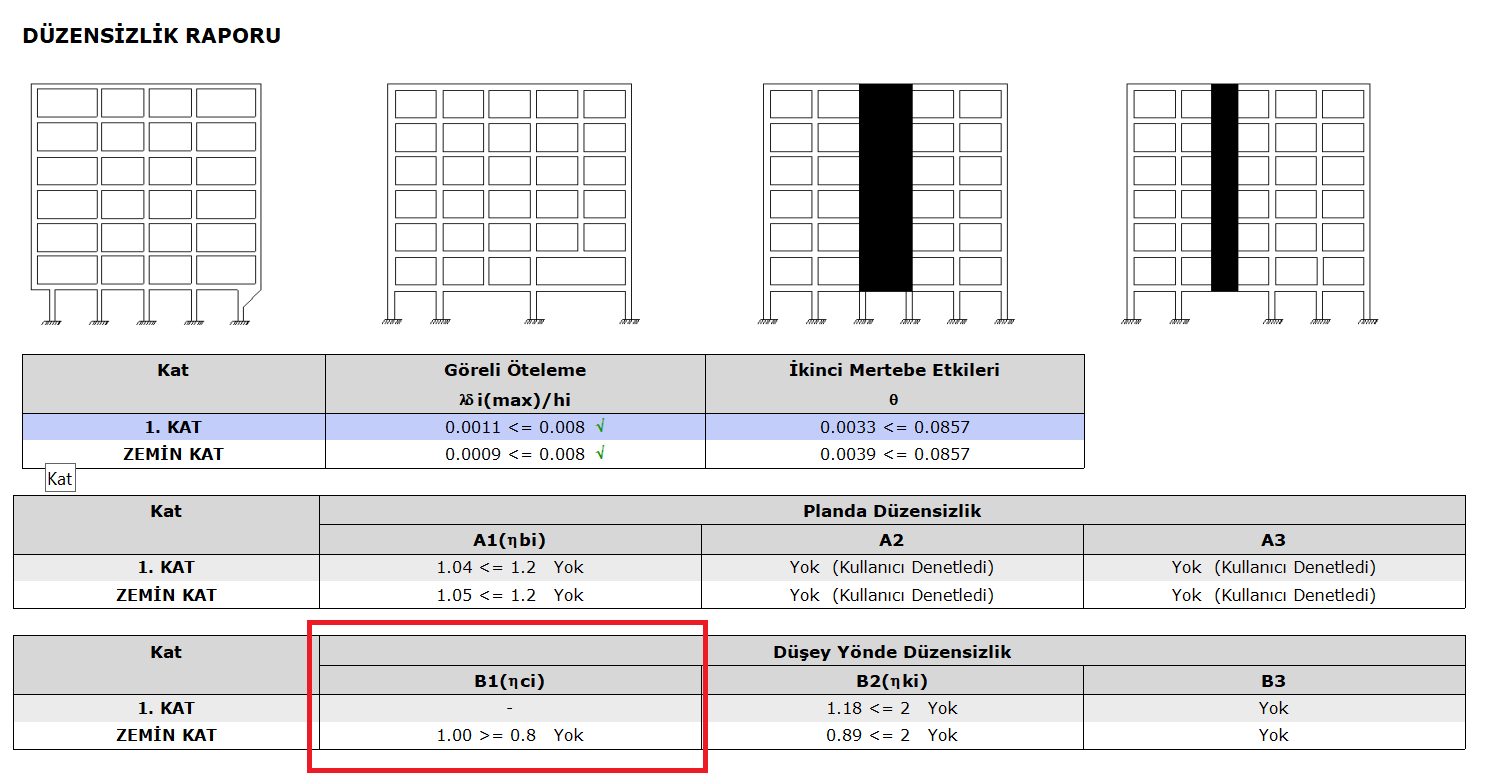Earthquake Code Statement (3.6.2.3)
CONS
ΣA e = Effective shear area in the direction of the earthquake considered in any floor
ΣA g = Total of cross-sectional areas of the
structural system elements working as a curtain parallel to the earthquake direction considered at any floor ΣA k = masonry filling parallel to the earthquake direction considered in any floor total of wall areas (excluding door and window openings)
ΣA w = Total effective body areas of column cross-section at any floor
η ci = Strength Irregularity Coefficient defined at i'th floor
B1, Interstorey Strength Irregularity, in reinforced concrete buildings, in any of the two orthogonal earthquake directions, the total effective cutting area of any floor, Strength is defined as the ratio of the total effective cutting area on an upstairs Irregularity Factor η c 's 0.80' is less than the case. The Strength Irregularity Coefficient η ci is defined as follows.
ηci = ( ΣAe )i / ( ΣAe )i+1 < 0.80]
Definition of effective cutting area in any floor:
(ΣA e ) i = (ΣA w ) i + (ΣA g ) i + (0.15 ΣA k ) i
In buildings with B1 type irregularities according to TBDY 3.6.2.3 ,
If the sum of the filling wall areas on the i'th storey considered is more than the upper storey, the infill walls will not be taken into account in the calculation of η ci .
Considering the floor where η ci is the smallest, the load-bearing system behavior coefficient given in Table 4.1 between 0.60 ≤ (η ci ) min <0.80 will be multiplied by 1.25 (η ci ) min value and applied to the whole building in both earthquake directions.
η ci will not be <0.60. Otherwise, the earthquake calculation will be repeated by increasing the strength and stiffness of the weak floor.
In the Irregularity Report , B1 type irregularity is checked and necessary conditions are applied.

